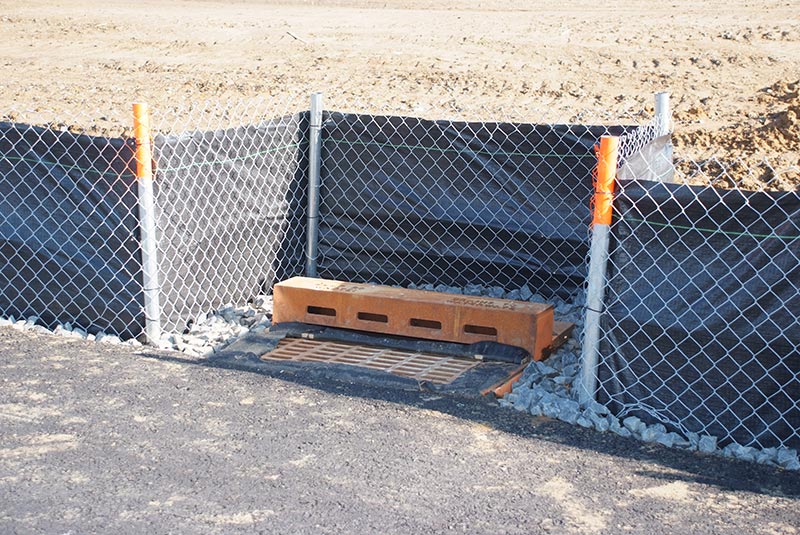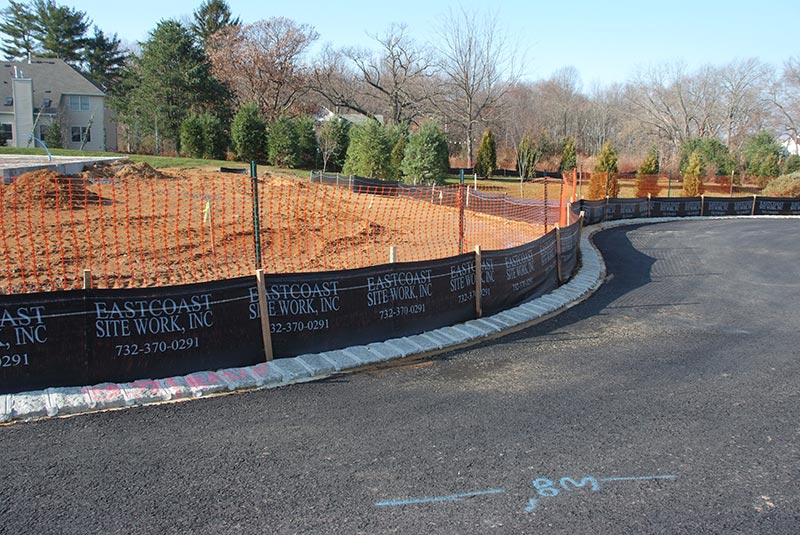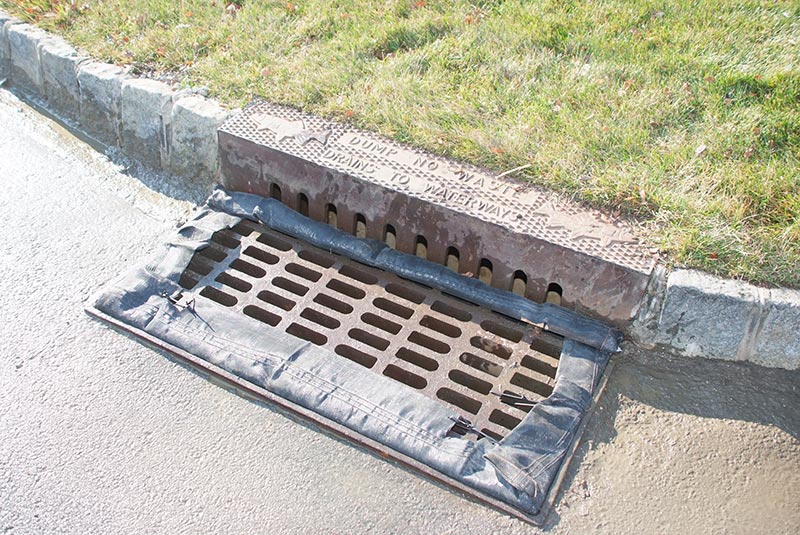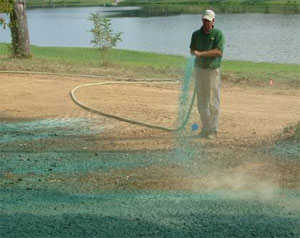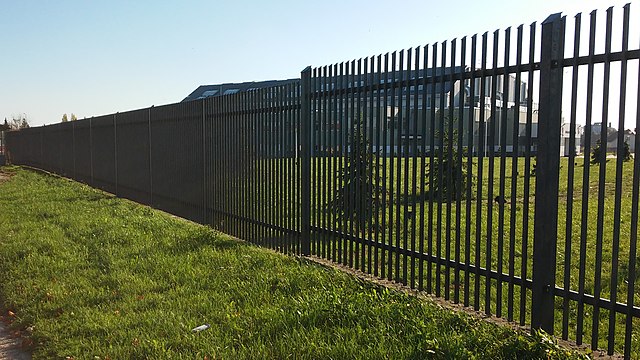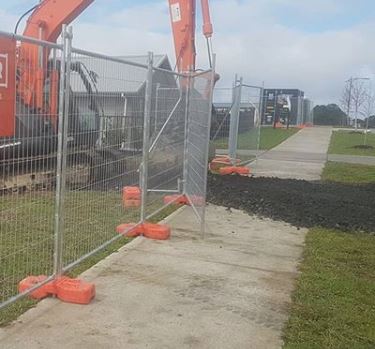Construction site erosion control can be a challenge. There are unique considerations to mitigating erosion on residential construction projects.
Multiple subcontractors are often working at the same time during subdivision development. Homebuilders for single family detached homes know this involves extensive planning and phasing and ultimately, erosion control can not be overlooked.
Erosion control must be mitigated and managed during all phases of construction. Set your site up for success by selecting erosion and sediment control products that meet your project’s needs.
EROSION AND SEDIMENT CONTROL PLANS
Every construction site needs a plan to prevent and manage stormwater and erosion. These requirements, however, may vary by state and even by county or municipality.
In Ocean County, New Jersey, “all construction activities greater than 5,000 square feet to be developed in accordance with a plan to control erosion during construction. The plan must also ensure that erosion will not occur once construction is completed.”
The New Jersey Department of Agriculture NJ Soil Erosion and Sediment Control Program outlines the The Standards for Soil Erosion and Sediment Control In New Jersey. Applications require the land disturbing operator to develop a Stormwater Pollution Prevention Plan (SWPPP) that is specific to the construction site. These requirements, put for in the Soil Erosion and Sediment Control Act, were crafted to “reduce the danger from storm water runoff, to retard nonpoint pollution from sediment and to conserve and protect the land, water, air and other environmental resources of the State.” Contractors must obtain permits and inspections from the technical staff at the Ocean County Soil Conservation District.
This SWPPP should
- Outline the steps to reduce runoff pollutants
- Identify sources of stormwater pollution
- Include methods to reduce pollution during and after construction
- The SWPPP includes an Erosion and Sediment Control Plan, a Pollution Prevention Plan and a Stormwater Management Plan.
EROSION CONTROL PRODUCTS FOR PHASE ONE OF CONSTRUCTION
After the plans are approved and permits are received, phase one of construction can begin. Depending on the land where you’re building this may involve clearing trees or simply grading for perimeter controls.
SILT FENCE FOR PERIMETER CONTROL
Before you begin grading, you need to establish a perimeter and control sediment. Silt Fence is the first choice for perimeter control because it establishes a clear perimeter around the construction site and controls sediment during construction. Silt Fence’s woven slit film polypropylene yarns act like a sieve – retaining sediment while allowing a filtered release of stormwater.
Since single family homebuilders that are developing smaller lots might benefit from using a Pre-Attached Silt Fence. Pre-Attached Silt Fence includes Silt Fence fabric and Oak Stakes mechanically attached in a roll form.
Subdivision developers, on the other hand, will need longer rolls of Silt Fence like a 300’, 500’ or even 1500’ roll. Eastcoast Site Work makes and warehouses our own silt fencing for immediate availability and quality control.
INLET PROTECTION FOR RESIDENTIAL CONSTRUCTION
It is critical to protect your inlets through all phases of construction. That includes existing inlets (such as curb inlets in front of a redeveloped detached home lot) and new inlets (those created after stormwater pipe is added).
Inlet or catch basin filtration devices are critical to meeting SWPPPs (Stormwater Pollution Protection Plans) and are required per many local stormwater regulations both during and post-construction. These devices are designed to quickly remove stormwater from streets, parking lots, and/or drainage areas – filtering our sediment, trash, bacteria, and other pollutants. These pollutants can clog the stormwater drainage systems resulting in unnecessary flooding in addition to polluting our waters.
More than likely you will need a combination of Curb Inlet and Drop Inlet devices for use during construction and permanent devices for post-construction needs to help meet city green infrastructure initiatives. The devices provide both above and below the grate drop inlet filtration as well as curb inlet filtration and are constructed from high quality permeable geotextile fabrics.
These stormwater products trap silt and sediment before pollutants enter the stormwater system. When you’re considering what inlet protection devices your development needs, consider how your devices were treated on previous projects. Inlet protection devices are run over by equipment, displaced and not returned to their inlets. Choose an inlet protection device that is easy to maintain and tough enough to last the duration of the project.
DROP INLET PROTECTION
For drop inlet protection, we utilize silt sacks. Silt sacks (Silt Filter Bags) are temporary catch basin filters that catches sediment, trash and debris as it enters an inlet. Available in both high flow and regular flow (all high visibility), Silt sack can be manufactured with built-in curb deflectors, a metal frame and overflow holes.
Routine inspection of a Silt sack’s collected sediment level is important to prevent “ponding” around storm drains.
Silt sacks (Silt Filter Bags) can be emptied and re-used for the life of the construction project if well maintained.
The best thing about a Silt Sack is that it secures below the grate. This means it can withstand vehicle, equipment and pedestrian traffic. When homeowners begin to move into the development, there is no unsightly construction device collapsing on or near the road. To maintain, simply remove the grate and the bag to clear out sediment build up after storms.
SEEDING AND STABILIZING HOME CONSTRUCTION SITES
The last key to erosion control on residential construction projects is seeding and stabilization.
SEEDING LOTS AND LAWNS
After the site work is complete and curb and gutter is in, subdivision lots begin to develop independently of each other. On large subdivision projects, one section may even develop months after another. That means you need to have ground cover during those months of inactivity.
Hydroseeding is the best way to get fast and widespread ground cover. Hydroseeders hydraulically spray hydromulch, seed, fertilizer and additives. Hydroseeding is ideal for inactive lots, backyards, front entrances and paths. Hydroseeding mixes vary greatly but most contractors prefer a seasonal Contractor’s Blend Seed. Our Contractor’s Blend works great for hydroseeding because it is cost-effective and custom blended to meet the needs of our New Jersey season.
When it comes to front yards and curb appeal, select a higher quality seed like a Quad Fescue. Sod is also a great option for pad lots in a subdivision because it is attractive in a growing neighborhood.
STABILIZE WITH EROSION CONTROL BLANKETS
If you need additional soil stabilization on these sections, you may also need to install erosion control blankets. There are endless options for Erosion Control Blankets and the selection ultimately comes down to the severity of your slope and erosion.
Residential developers that are concerned about degradability, however, should select an All Natural Erosion Control Blanket. The All Natural Blanket is 100% biodegradable which means it will fully degrade over time.
Avoid Erosion Control Blankets are only partially degradable. When homeowners move in and start to mow their lawns, the fibers from a standard Erosion Control Blanket can get caught in lawn mower blades. This causes major stress and might even result in damage. Single family homebuilders will not likely need to hydroseed but erosion control blankets may be necessary for sensitive areas like slopes and curbsides.
Like most challenges faced during construction projects, there isn’t just one answer when it comes to erosion control. The products selected should make sense when applied to the size and scope of your plans. The strategies you need for erosion control on a single family home project will be different than for larger subdivisions, which will require more solutions.
Save yourself time and stress by selecting smart erosion control products that can withstand wear and tear. Integrate these products into planning so there is a solution in place if an erosion control or Stormwater management issue arises.
Additional Resources
- How and when to use an erosion control blanket
- Why choose hydroseeding to establish a lawn?
- Construction Sitework: Everything You Need to Know
- Silt Fence Best Practices for Stormwater Management
- Read about Types of Soil Erosion and Mitigation Strategies in this article
- Read more about What is Soil Stabilization in Road Construction here
- This article discusses The Benefits of Erosion Control Tubes and Silt Socks
- Do You Need a Portable Temporary Fence for Your Construction Site?
- Siltsack Protects Storm Drains and Inlets From Sediment and Pollutants
- What is a retention pond and why is maintenance important?
- Where Does Stormwater Runoff Go?

